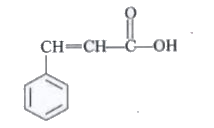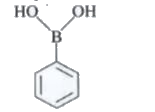Can the amino group, in the aniline molecule, become meta-directing in an elecrophilic substitution reaction?
No, it never shows meta directing properties.
Yes in a strongly acidic medium.
Yes, in a strongly alkaline medium.
Yes, in a non-polar solvent.
The correct Answer is:B
To determine whether the amino group in an aniline molecule can become meta-directing in an electrophilic substitution reaction, we will analyze the behavior of the amino group under different conditions.
1. Understand the Structure of Aniline:
- Aniline consists of a benzene ring attached to an amino group (-NH2).
- The structure can be represented as:
NH2∣C6H5
2. Identify the Nature of the Amino Group:
- The amino group is an electron-donating group due to the presence of a lone pair of electrons on the nitrogen atom.
- This group can donate its lone pair to the benzene ring, increasing the electron density.
3. Resonance Structures:
- The resonance effect of the amino group can be illustrated by drawing resonance structures. The lone pair on nitrogen can delocalize into the benzene ring, leading to increased electron density at the ortho and para positions.
- This means that the amino group activates the benzene ring towards electrophilic substitution, making it ortho- and para-directing.
4. Effect of Acidic Medium:
- In an acidic medium, the amino group can become protonated to form -NH3+. This protonation leads to a decrease in electron density on the benzene ring due to the -NH3+ acting as an electron-withdrawing group.
- In this case, the electron density is highest at the meta position, making the meta position more favorable for electrophilic attack.
5. Effect of Alkaline Medium:
- In a strongly alkaline medium, the amino group remains unprotonated and continues to donate electrons, maintaining its ortho- and para-directing properties.
- Thus, in alkaline conditions, the amino group does not show meta-directing behavior.
6. Effect of Nonpolar Solvent:
- In a nonpolar solvent, the polar nature of the aniline molecule (due to the amino group) will not facilitate a reaction. Therefore, no electrophilic substitution will occur in a nonpolar solvent.
Conclusion:
- The amino group in aniline is primarily ortho- and para-directing due to its electron-donating resonance effect. However, in a strongly acidic medium, it can exhibit meta-directing properties due to the formation of a protonated species that withdraws electron density from the benzene ring.
Final Answer:
- The amino group in aniline can become meta-directing in a strongly acidic medium.
- Aniline consists of a benzene ring attached to an amino group (-NH2).
- The structure can be represented as:
NH2∣C6H5
- The amino group is an electron-donating group due to the presence of a lone pair of electrons on the nitrogen atom.
- This group can donate its lone pair to the benzene ring, increasing the electron density.
- The resonance effect of the amino group can be illustrated by drawing resonance structures. The lone pair on nitrogen can delocalize into the benzene ring, leading to increased electron density at the ortho and para positions.
- This means that the amino group activates the benzene ring towards electrophilic substitution, making it ortho- and para-directing.
- In an acidic medium, the amino group can become protonated to form -NH3+. This protonation leads to a decrease in electron density on the benzene ring due to the -NH3+ acting as an electron-withdrawing group.
- In this case, the electron density is highest at the meta position, making the meta position more favorable for electrophilic attack.
- In a strongly alkaline medium, the amino group remains unprotonated and continues to donate electrons, maintaining its ortho- and para-directing properties.
- Thus, in alkaline conditions, the amino group does not show meta-directing behavior.
- In a nonpolar solvent, the polar nature of the aniline molecule (due to the amino group) will not facilitate a reaction. Therefore, no electrophilic substitution will occur in a nonpolar solvent.
- The amino group in aniline is primarily ortho- and para-directing due to its electron-donating resonance effect. However, in a strongly acidic medium, it can exhibit meta-directing properties due to the formation of a protonated species that withdraws electron density from the benzene ring.
- The amino group in aniline can become meta-directing in a strongly acidic medium.
Topper's Solved these Questions
- AROMATIC COMPOUNDS BOOK - RESONANCE ENGLISHCHAPTER - AROMATIC COMPOUNDS EXERCISE - PART-III: PRACTICE TEST-2(IIT-JEE(ADVANCED pattern))
7 Videos
- AROMATIC COMPOUNDS BOOK - RESONANCE ENGLISHCHAPTER - AROMATIC COMPOUNDS EXERCISE - Section -2 (one or more than one options correct type)
7 Videos
- AROMATIC COMPOUNDS BOOK - RESONANCE ENGLISHCHAPTER - AROMATIC COMPOUNDS EXERCISE - PART-I PRACTICE TEST-1(IIT-JEE MAIN PATTERN)
30 Videos
- ATOMIC STRUCTUREBOOK - RESONANCE ENGLISHCHAPTER - ATOMIC STRUCTUREEXERCISE - ORGANIC CHEMISTRY(Fundamental Concept )
16 Videos
Similar Questions
Knowledge Check
Which of the following are deactivating but ortho, para directing during electrophilic aromatic substitution reaction ?
A B
B C
C D
D
Assertion : Aromatic aldehydes and ketones undergo electrophilic substitution reaction at metaposition.
Reason : Carbonyl group activates the ring towards electrophilic substitution reactions.AIf both assertion and reason are true and reason is the correct explanation of assertion.BIf both assertion and reason are true but reason is not the correct explanation of assertion.CIf assertion is true but reason is false.DIf both assertion and reason are false.
Althrough chlorine is an electron withdrawing group, yet it is ortho-para-directing in electrophilic aromatic substitution reactions. Explain why it is so ?
View SolutionThe most deactivating group for electrophilic substitution reaction in benzene ring is
View SolutionArrange the following in decreasing order of reactivity towards electrophilic substitution reaction
Aniline (I) , Acetanilide (II)
phenol (III) , Anilinium chloride (IV)
View SolutionWhich of the following functional groups is generally least reactive towards nucleophilic substitution reaction?
View SolutionAssertion : Aniline does not undergo Friendel-Crafts reaction .
Reason : Friedel-Craft reaction is an electrophilic substitution reaction .
View SolutionGiven an example of meta-directing group.
View Solution
